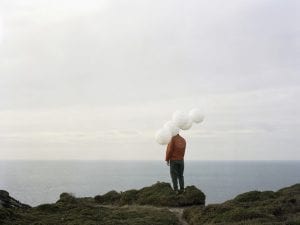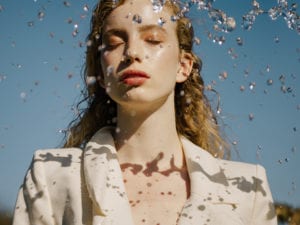Barrie Dale considers all human endeavour beautiful unless it involves greed. He sees no barriers or even distinctions between the Arts and the Sciences, between the visual and the performing arts, or between painting and photography. He believes that the natural world represents a largely untapped source of artistic interest. Over the past two hundred years human beings have distanced themselves from nature in both the arts and in technology. This has not led to more satisfying lives. Human beings, if they are to prosper, must return to being close to nature. Artists should be leading the way. Aesthetica catches up with the photographer.
A: Congratulations on your latest exhibition at Bampton Gallery, Oxfordshire – tell us about the pieces on show.
BD: Bampton is an Art Gallery, and I tried to choose accordingly. The most telling response I got was that I was ‘too much of an artist to be a photographer, too much of a photographer to be an artist.’ I decided I liked that: I have a niche!
I also gave a talk, ‘Returning to the Cave’, proposing that Late Stone Age Cave Art was of superlative quality, confident, optimistic and outward-looking. By comparison current mainstream art seems pessimistic and introspective, having largely rejected nature as a source of inspiration. I would like to see artists, and all other humans, return to being much closer to nature.
A: The photograph in the magazine is darker than those you have shown before: where has the development come from?
BD: OK, so you see it as dark. I see it as providing a rich, luminous background for showing off the flowers. You are right, though; I prefer to photograph into the light, but you can’t always do that. I am searching for hidden treasure, and I have to take opportunities as they arise. So it’s not really a development, more of a response to a situation. My driving force is the belief that there is still a rich, untapped store of art being concealed by nature that we don’t even know about. You can’t know where to find it because you never know whether it’s there or not.
A: How do you decide which direction the work will go next?
BD: That isn’t really the way I work. I am trying not to impose. I am aiming to be a sensor, not an actuator. I might take a decision about where to go and look next, but even that would be provisional, merely providing a starting point. I usually find myself being led by what’s in front of me, and it’s usually a long time before I arrive at anything interesting. I never come back with what I went out for. The best times are when you return with something completely unexpected (the three images I have provided are a good examples), and you can’t plan for that.
A: You shoot the images in your own field of wildflowers. How do the seasons dictate what you choose to capture?
BD: The seasons dominate. For me, Autumn is the beginning of the year: that is when everything starts, with all the seed-heads to photograph. Then, in November, it is the turn of the Mosses. Spring flowers start to arrive in March, with Hairy Bittercress. After that it is Cow Parsley, Ground Ivy, Red Campion, Chickweed, Herb Robert, Meadow Crane’s-bill, Greater Willow-herb . . . In addition, from April onwards there are all the flowering grasses, which to me are an endless source of artistic interest.
A: What would you say is your proudest moment to date?
BD: I am not comfortable with being ‘proud’; to me ‘pride’ is a rather unpleasant emotion. When I enter international competitions, such as the Aesthetica Art Prize, I almost always get to the final round. I find that encouraging. I am also encouraged when a highly respected practicing artist buys one of my prints, and when a dying person asked for one of my pictures to look at, I felt deeply fulfilled.
Barrie Dale’s images are available to view and to buy on his website, www.wildhaven.co.uk.
To see his listing in the Artists’ Directory in Aesthetica Magazine issue 65 pick up a copy at www.aestheticamagazine.com
Follow us on Twitter @AestheticaMag for the latest news in contemporary art and culture
Credits:
1. Dark Passions. Courtesy of the artist.
2. Flowering Grasses, After Heavy Rain. Courtesy of the artist.



